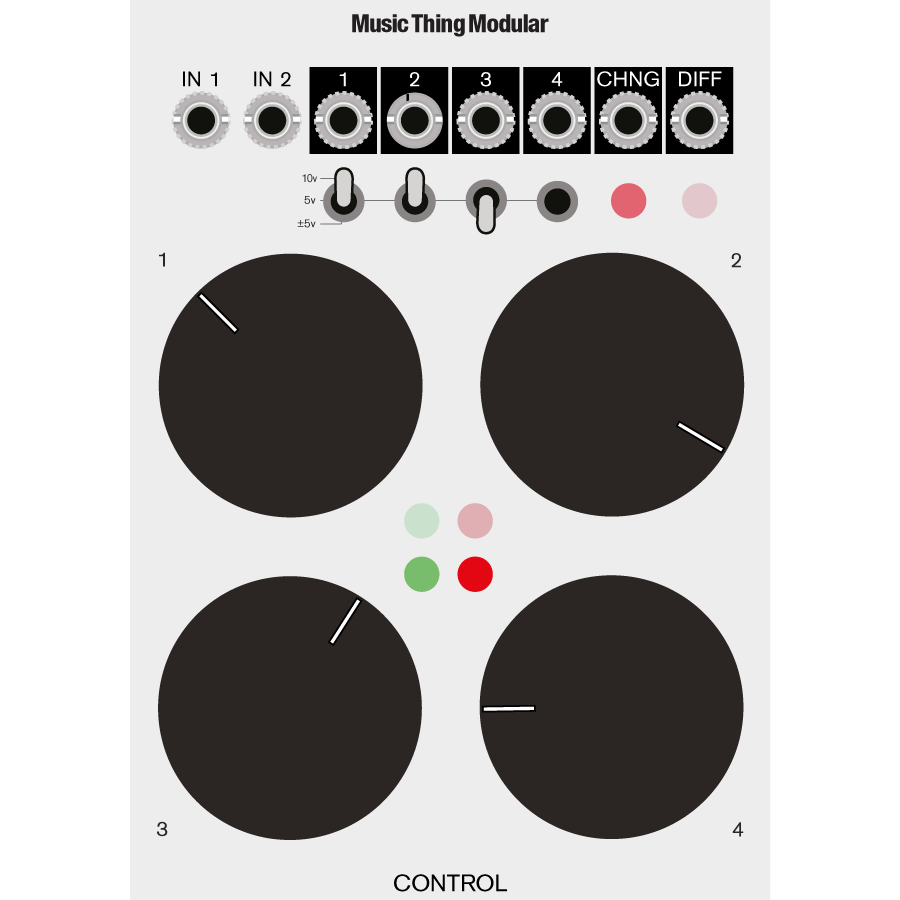11 things to know about Control

18 HP |
24 mm deep |
52 mA
Designed June 2020
Modular Grid |
Videos
Request Design Files |
Schematic
Available from Thonk
- After spending a lot of time working on smaller and smaller projects, I realised that many Eurorack synths were missing something critical: controls that are big enough to be fun.
- I wrote a longer piece about Human-Sized Musical Interfaces, touching on NASA guidelines, the cult of vintage test equipment and DJs suffering from Hot Knobs.
- Control is an absurdly simple module: Four big knobs that output voltages. Connect those voltages to modules, and you have high-precision, intuitive control. Connect those voltages to several modules, and you have interesting, repeatable confusion.
- The first two channels (top two knobs) are also attenuators if something is plugged into the leftmost sockets.
- The voltage on each channel can be 0–5v (middle), 0–10v (up), or -5v to +5v (down). When using a channel as an attenuator, keep it in 0–5v or you’ll get weird gain or offset (which you may want).
- There are two extra outputs. Change outputs just the changes as they happen. If a knob is turned quickly to the right, it will output a little burst of positive voltage. If a four-handed performer turns all four knobs quickly anti-clockwise, it will output a chunky pulse of negative voltage. Patching Change into an input creates a primitive clock.
- Diff is a difference rectifier, inspired by NonlinearCircuits, but with a slightly different circuit. It compares the difference between 1&2, and between 3&4, and finally outputs the difference between those two differences. The aim was to create a bumpy, unpredictable voltage between 0 and 10v. It’s not random, but it’s not easily predictable, either.
- Each knob has its own bi-colour LED to provide visual feedback on how much voltage is being output. There are also LED indicators for the Change and Diff outputs.
- And that's just about it. The circuit isn't designed to be super precise. It works best when you patch into a bunch of points in a complex patch, then just sit back, listen, and make small (or big) movements with the knobs.
- The pots themselves are a bit special: high quality TT Electronics P260T – as used in SynthTech modules and many 5U synths. They have steel shafts bolted to the front panel and they feel great.
- It's a relatively simple build - all PCB components are pre-soldered SMD, so the assembly is mainly LEDs, pots and a slightly fiddly mechanical process. Watch me building a kit below.
Hainbach using Control in his Small Wall of Test Equipment
Great build video from Synth DIY Guy
Detailed build video by me on my messy desk
Short but lovely clip of Marcus Fischer playing a prototype Control
